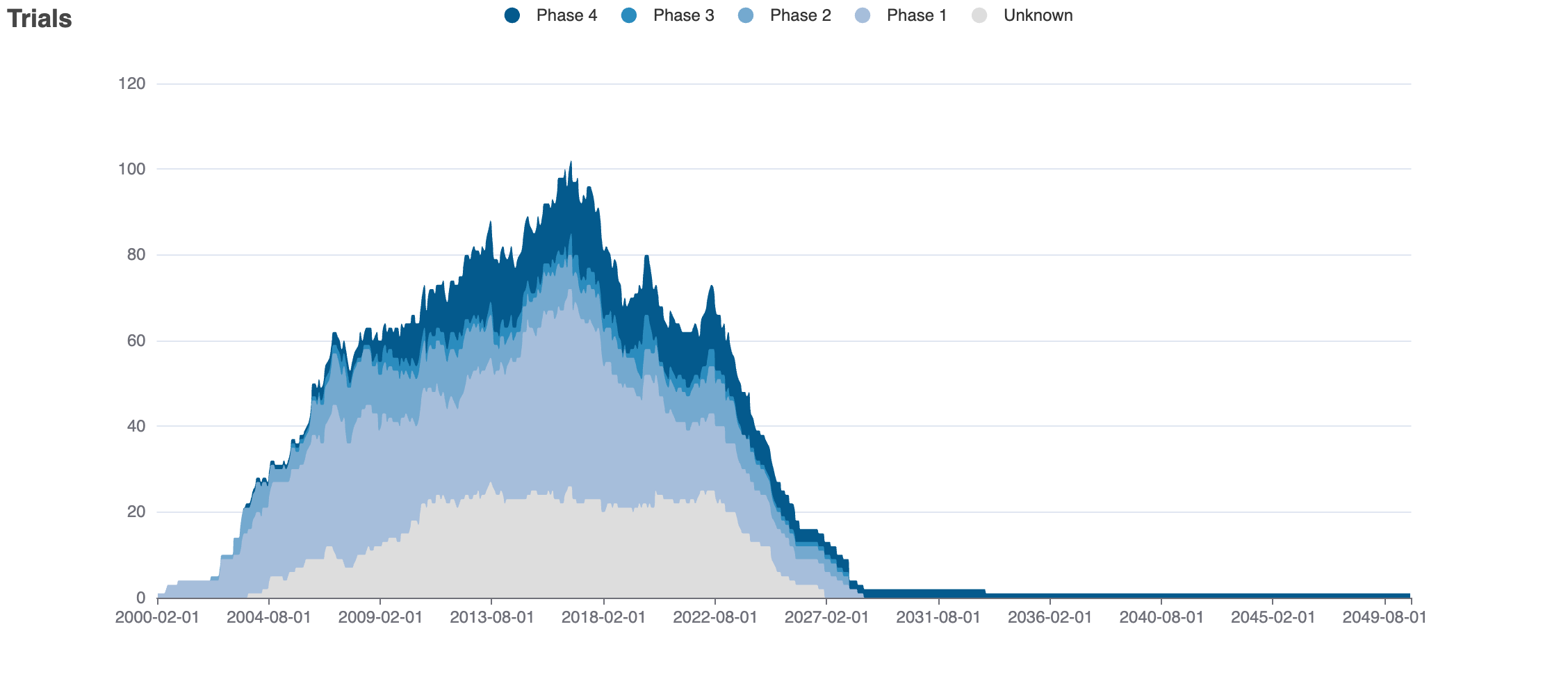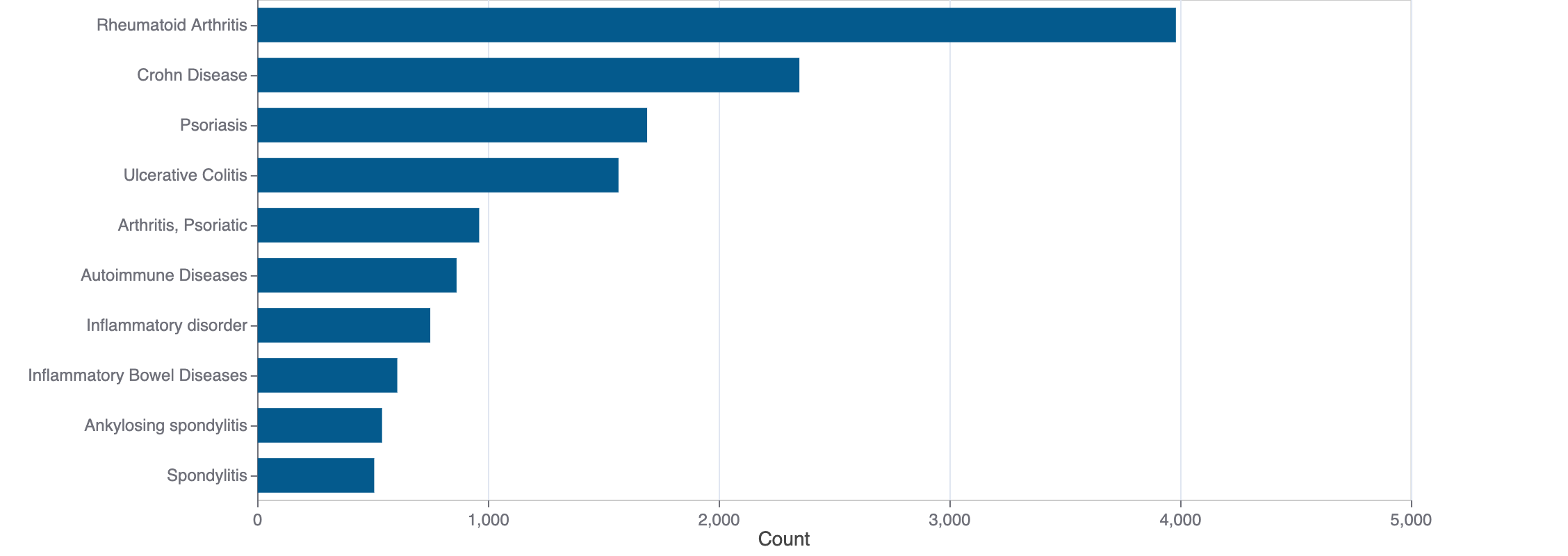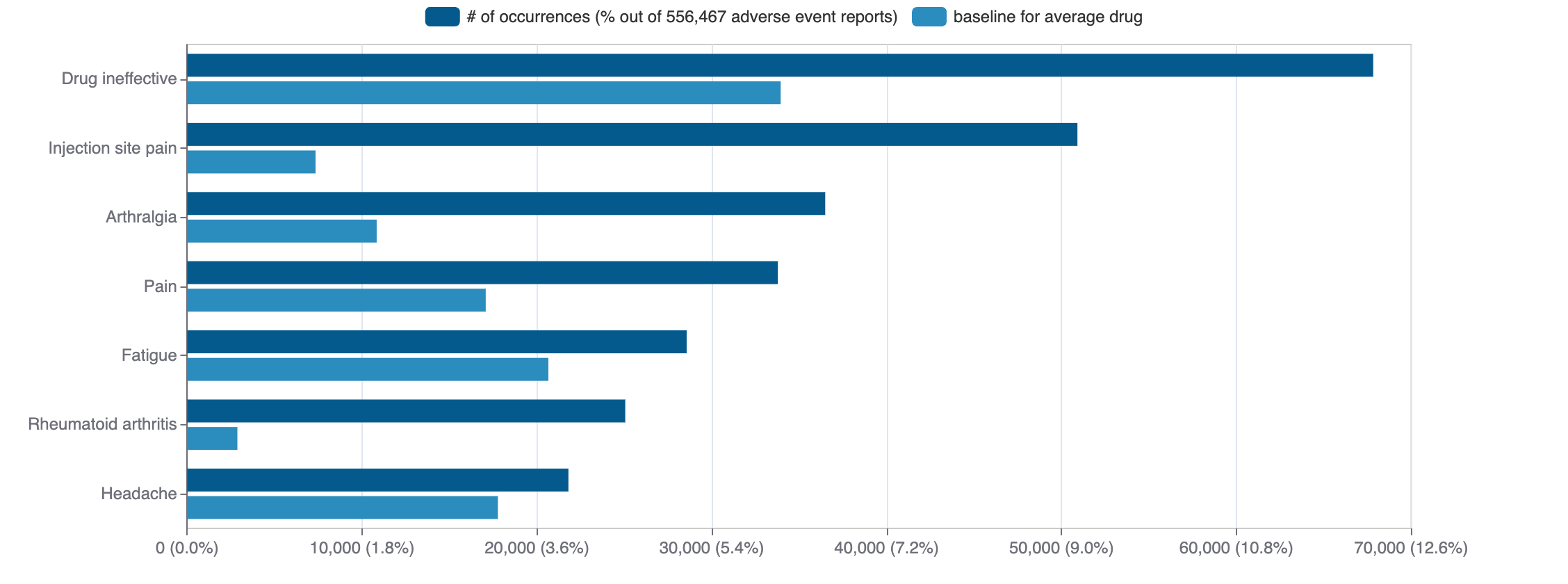Entinostat
Entinostat is a small molecule pharmaceutical. It is currently being investigated in clinical studies. It is known to target histone deacetylase 3, histone deacetylase 9, histone deacetylase 1, and histone deacetylase 2.
Download report
Favorite
Events Timeline
Commercial
Clinical
Drug
Target
Variants
Financial
Trends
Safety
Events Timeline
5D
1M
3M
6M
YTD
1Y
2Y
5Y
Max
Events
FDA approval date
EMA approval date
Patent expiration date
Study first post date
Last update post date
Start date
Primary completion date
Completion date
Results first post date

Mock data
Subscribe for the real data
Subscribe for the real data
Commercial
Therapeutic Areas
No data
Trade Name
FDA
EMA
No data
Drug Products
FDA
EMA
New Drug Application (NDA)
New Drug Application (NDA)
Abbreviated New Drug Application (ANDA)
Abbreviated New Drug Application (ANDA)
No data
Labels
FDA
EMA
No data
Indications
FDA
EMA
No data
Agency Specific
FDA
EMA
No data
Patent Expiration
No data
HCPCS
No data
Clinical
Clinical Trials
72 clinical trials
View more details

Mock data
Subscribe for the real data
Subscribe for the real data
Indications Phases 4
No data
Indications Phases 3
No data
Indications Phases 2
Indication | MeSH | Ontology | ICD-10 | Ph 1 | Ph 2 | Ph 3 | Ph 4 | Other | Total |
|---|---|---|---|---|---|---|---|---|---|
| Non-small-cell lung carcinoma | D002289 | — | — | — | 1 | — | — | — | 1 |
| Genetic therapy | D015316 | — | — | — | 1 | — | — | — | 1 |
| Renal cell carcinoma | D002292 | EFO_0000376 | — | — | 1 | — | — | — | 1 |
| Pancreatic neoplasms | D010190 | EFO_0003860 | C25 | — | 1 | — | — | — | 1 |
| Cholangiocarcinoma | D018281 | — | C22.1 | — | 1 | — | — | — | 1 |
| Neoplasm metastasis | D009362 | EFO_0009708 | — | — | 1 | — | — | — | 1 |
Indications Phases 1
No data
Indications Without Phase
No data
Epidemiology
Epidemiological information for investigational and approved indications
View more details
Drug
General
| Drug common name | Entinostat |
| INN | entinostat |
| Description | Entinostat is a member of the class of benzamides resulting from the formal condensation of the carboxy group of the pyridin-3-ylmethyl carbamate derivative of p-(aminomethyl)benzoic acid with one of the amino groups of benzene-1,2-diamine. It is an inhibitor of histone deacetylase isoform 1 (HDAC1) and isoform 3 (HDAC3). It has a role as an EC 3.5.1.98 (histone deacetylase) inhibitor, an antineoplastic agent and an apoptosis inducer. It is a member of pyridines, a carbamate ester, a substituted aniline, a primary amino compound and a member of benzamides. It is functionally related to a 1,2-phenylenediamine. |
| Classification | Small molecule |
| Drug class | enzyme inhibitors: histone deacetylase inhibitors |
| Image (chem structure or protein) |  |
| Structure (InChI/SMILES or Protein Sequence) | Nc1ccccc1NC(=O)c1ccc(CNC(=O)OCc2cccnc2)cc1 |
Identifiers
| PDB | — |
| CAS-ID | 209783-80-2 |
| RxCUI | — |
| ChEMBL ID | CHEMBL27759 |
| ChEBI ID | — |
| PubChem CID | 4261 |
| DrugBank | — |
| UNII ID | 1ZNY4FKK9H (ChemIDplus, GSRS) |
Target
Agency Approved
No data
Alternate
HDAC1
HDAC1
Variants
No data
Financial
No data
Trends
PubMed Central
Top Terms for Disease or Syndrome:

Mock data
Subscribe for the real data
Subscribe for the real data
Additional graphs summarizing 4,983 documents
View more details
Safety
Black-box Warning
No Black-box warning
Adverse Events
Top Adverse Reactions

Mock data
Subscribe for the real data
Subscribe for the real data
149 adverse events reported
View more details
© 2020-2025 Collaborative Drug Discovery Inc. (CDD) | Terms of Use